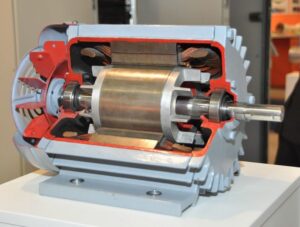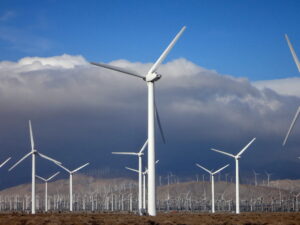
I wouldn’t buy shares in any car company.
There are two reasons for this.
First, cars don’t scale.
It’s math. Every parking place is about 9 feet by 18 feet (3 meters by 6 if you’re in Europe.) That’s not even big enough for a lot of the trucks Detroit is making today. On the road, you need a lot more space than that. The average car carries fewer than 2 people. Most people drive alone.
The result is that, once the average building is over one story in height, city streets block up. Cars don’t scale for density.

We have known this for decades, but electricity offers a way out. Electric motors can be scaled to any size, from a wheelchair or scooter to a giant train. Gas engines don’t work with anything smaller than a motorcycle, or anything bigger than a semi-truck.
Before World War II, cities were designed around rails and density. The suburban model of distance and driving is a new one. It can be broken by giving each suburb a defined center and building density around that. Then you connect the suburbs with bike routes as car use declines. The cities of 2030 will look more like those of 1930 than those of 1980.
Electric Moore’s Law

The costs of Electric Vehicles (EVs) and their fuel.
As I’ve said before, electric motors are simple. It’s two electromagnets, one stationery and one moving. Electricity can drive the inner rotor and make a motor. Any other force turning the inner rotor can produce electricity, a generator. The technology is centuries old.
About 40% of an EV’s cost lies in the battery. Battery costs are declining, not just with mass production, but with new materials. Energy density is increasing, which means the weight needed to run an electric vehicle is declining. The improvement in productivity is estimated at 33% per year.

The costs of battery fuel are also declining. Solar and wind energy now cost less than fossil fuel energy. We still haven’t adapted our electric infrastructure to this new abundance, but that work has begun. More storage, more small and interconnected grids, and more power are being produced closer to where it’s used. They’re all having a deflationary effect.
We’re commuting less, our driving distances are shortening, and we’re going to stores less often thanks to e-commerce. Total demand for travel is going down, just as the cost of that travel is going down.
I don’t care what kind of car you’re building. It’s bad news. It’s not going to get better. Sell your car stocks.










